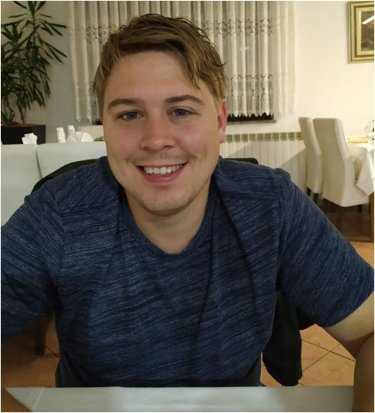Visible light spectroscopic optical coherence tomography for applications in neonatal healthcare
Due to the COVID-19 crisis measurements the PhD defence of Colin Veenstra will take place online without the presence of an audience.
The recording of this defence will be added to the video overview of recent defences.
Colin Veenstra is a PhD student in the research group Biomedical Photonic Imaging. His supervisor is prof.dr.ir. W. Steenbergen from the Faculty of Science and Technology.
 In this thesis, we explored the opportunities of spatially resolved optical spectroscopy for neonatal healthcare. Hereto, we developed a setup that makes use of spectroscopic optical coherence tomography (sOCT). This technique allows for spectroscopic measurement of the attenuation of light within a confined measurement volume, without being influenced by surrounding tissues. Throughout this thesis, we explored the possibilities of sOCT for estimating tissue properties which are relevant to newborns. In this way, we hope to contribute to neonatal healthcare by enabling a non-invasive alternative for invasive blood sampling and by enabling more scientific research into human milk and lactation.
In this thesis, we explored the opportunities of spatially resolved optical spectroscopy for neonatal healthcare. Hereto, we developed a setup that makes use of spectroscopic optical coherence tomography (sOCT). This technique allows for spectroscopic measurement of the attenuation of light within a confined measurement volume, without being influenced by surrounding tissues. Throughout this thesis, we explored the possibilities of sOCT for estimating tissue properties which are relevant to newborns. In this way, we hope to contribute to neonatal healthcare by enabling a non-invasive alternative for invasive blood sampling and by enabling more scientific research into human milk and lactation.
The measured attenuation of light as a function of depth in conventional sOCT is not only affected by the optical properties of the sample, but also by influences of the system itself. Developing an sOCT system that implements both zero-delay acquisition and focus tracking, allowed us to measure the attenuation of light as a function of depth without being affected by the properties of the system. Another important advantage of combining zero-delay acquisition with focus tracking is measuring with optimal sensitivity at every depth inside the sample. The attenuation of light is directly related to the concentration of chromophores and scattering particles. Examples of chromophores are hemoglobin and bilirubin. An example of scattering particles are fat globules in milk, which also cause the white appearance of milk. We showed in a laboratory setting that our sOCT system is able to quantify hemoglobin and bilirubin concentrations. Furthermore, we mapped the optical properties of human milk and investigated the influence of milk sample preparation methods on these optical properties.





